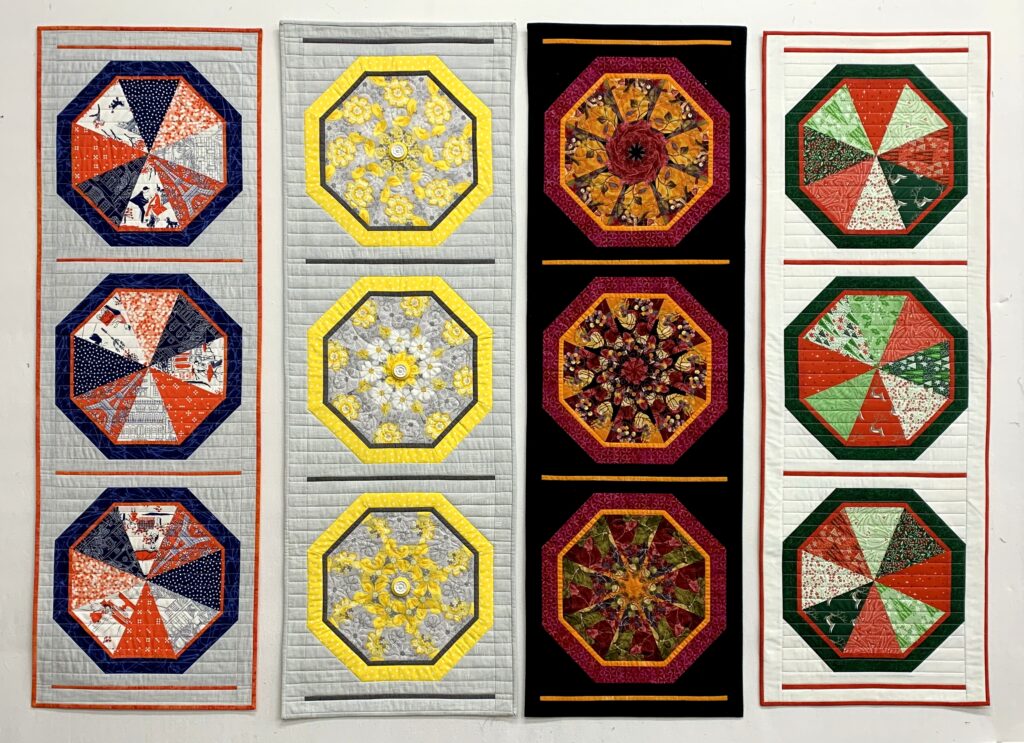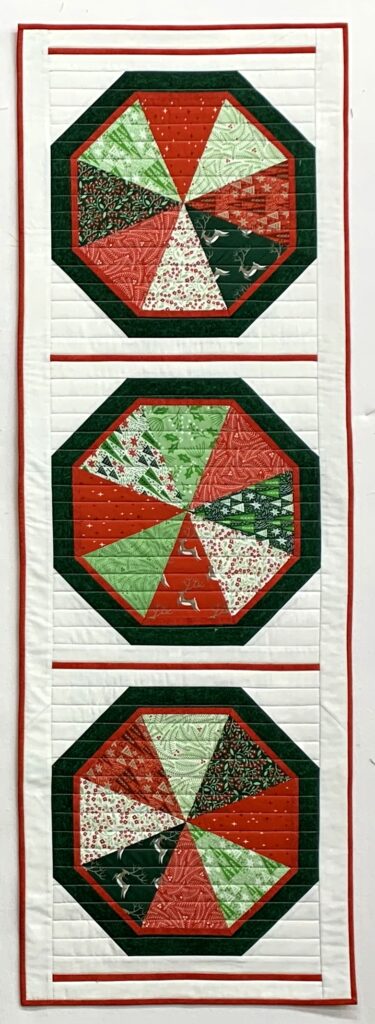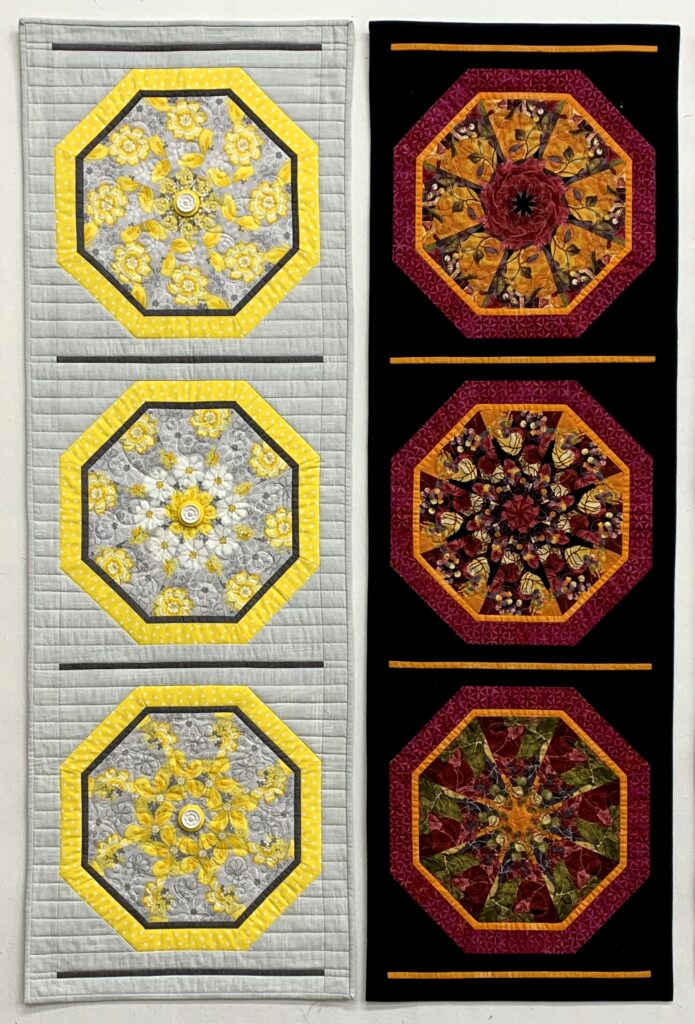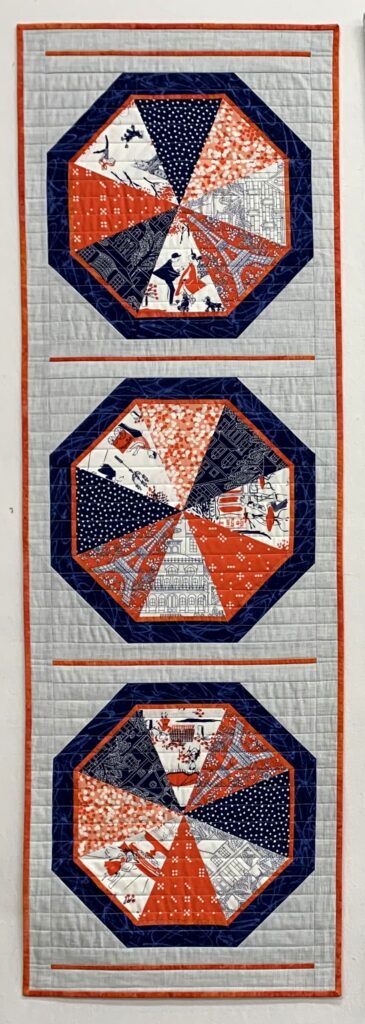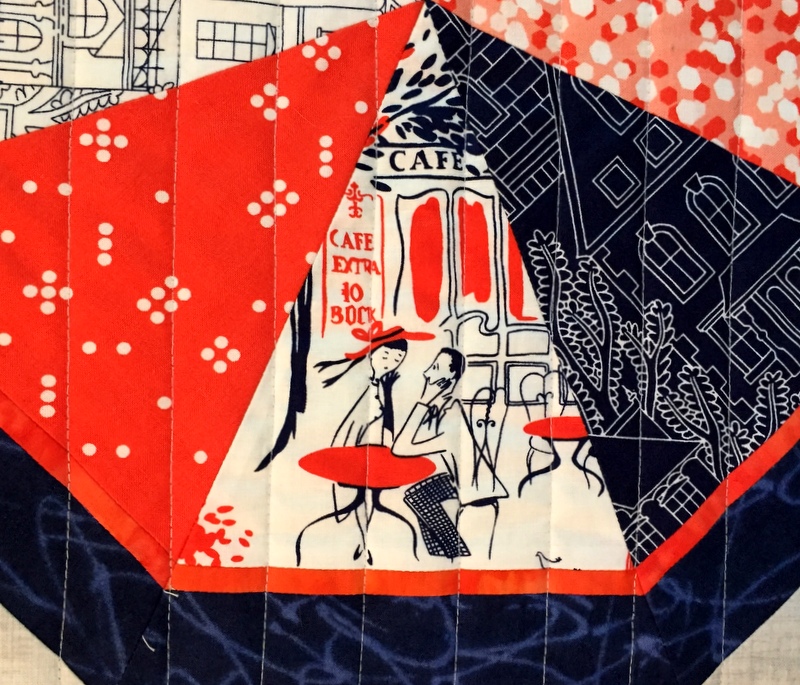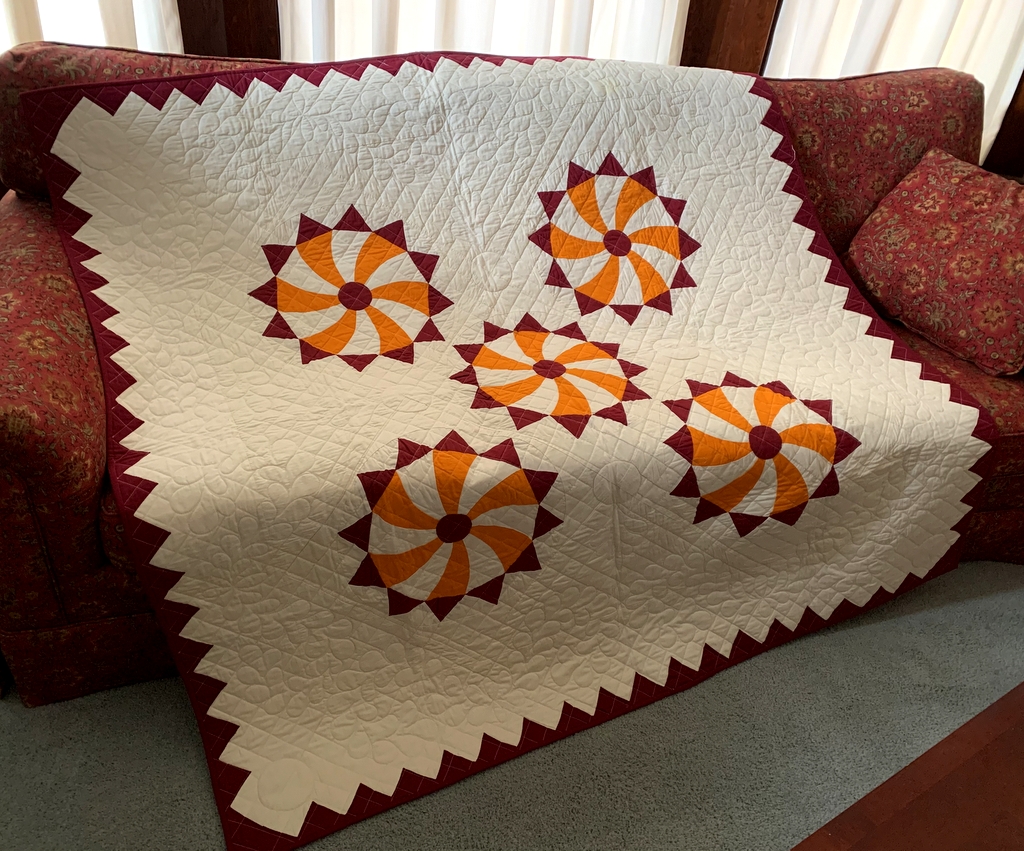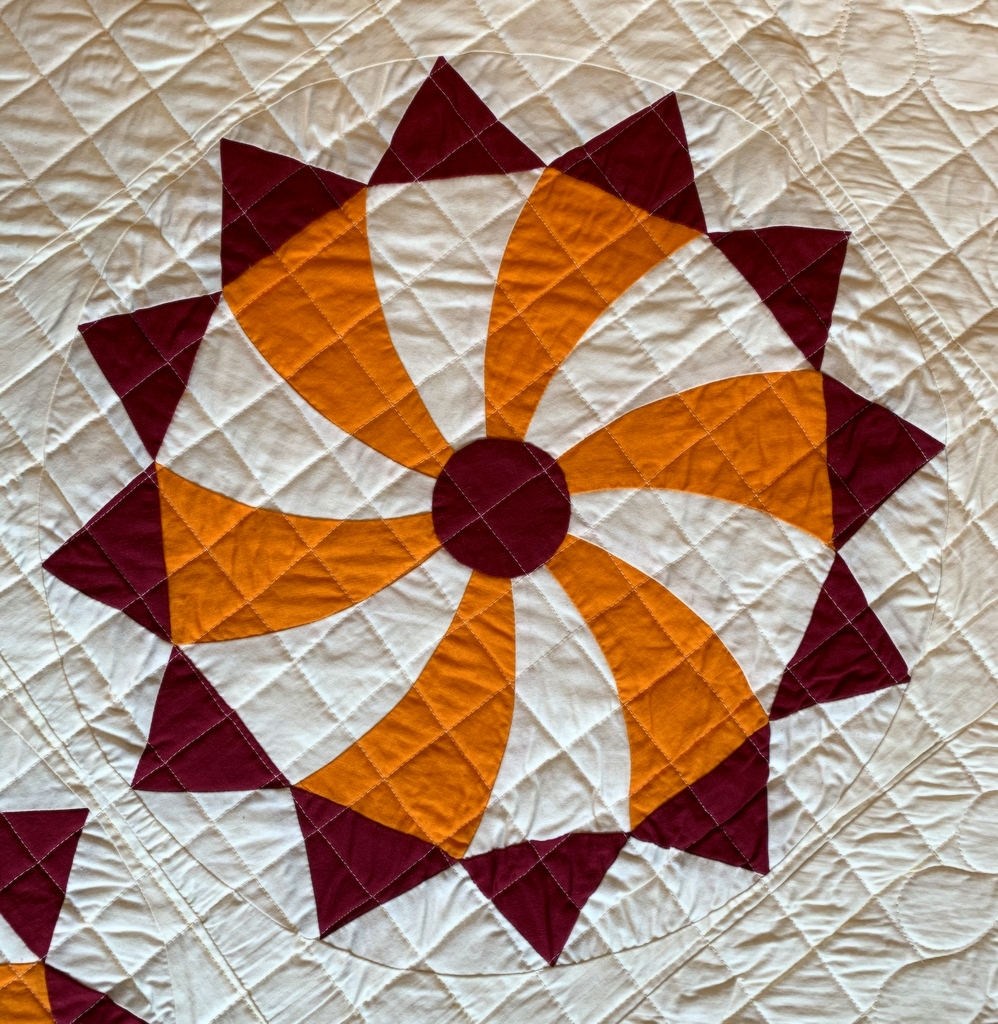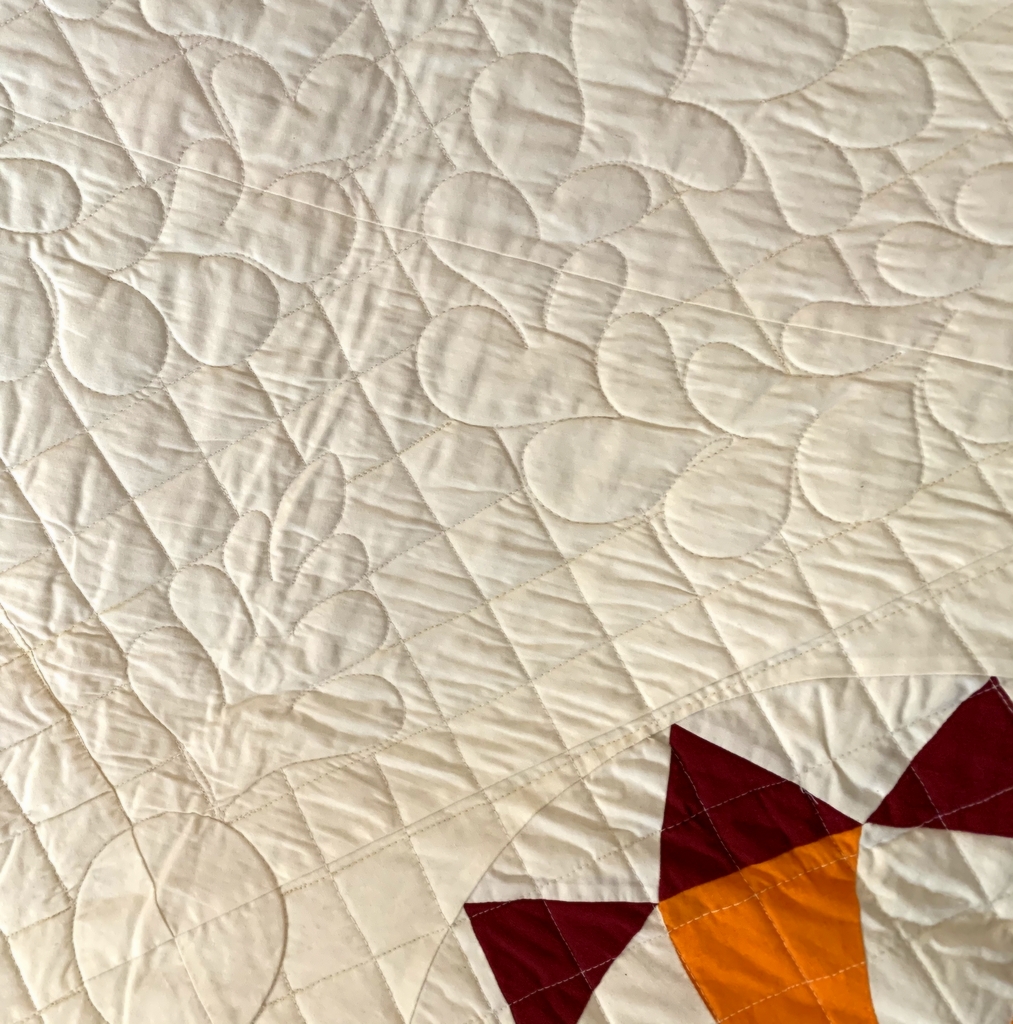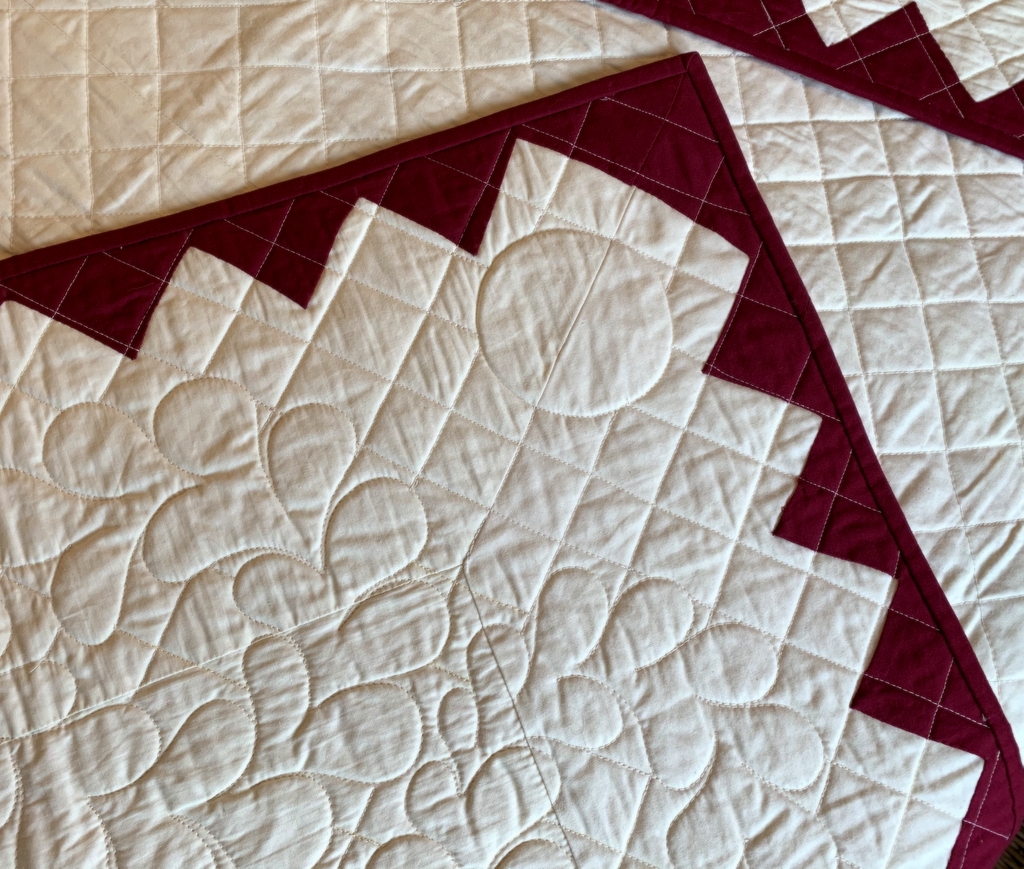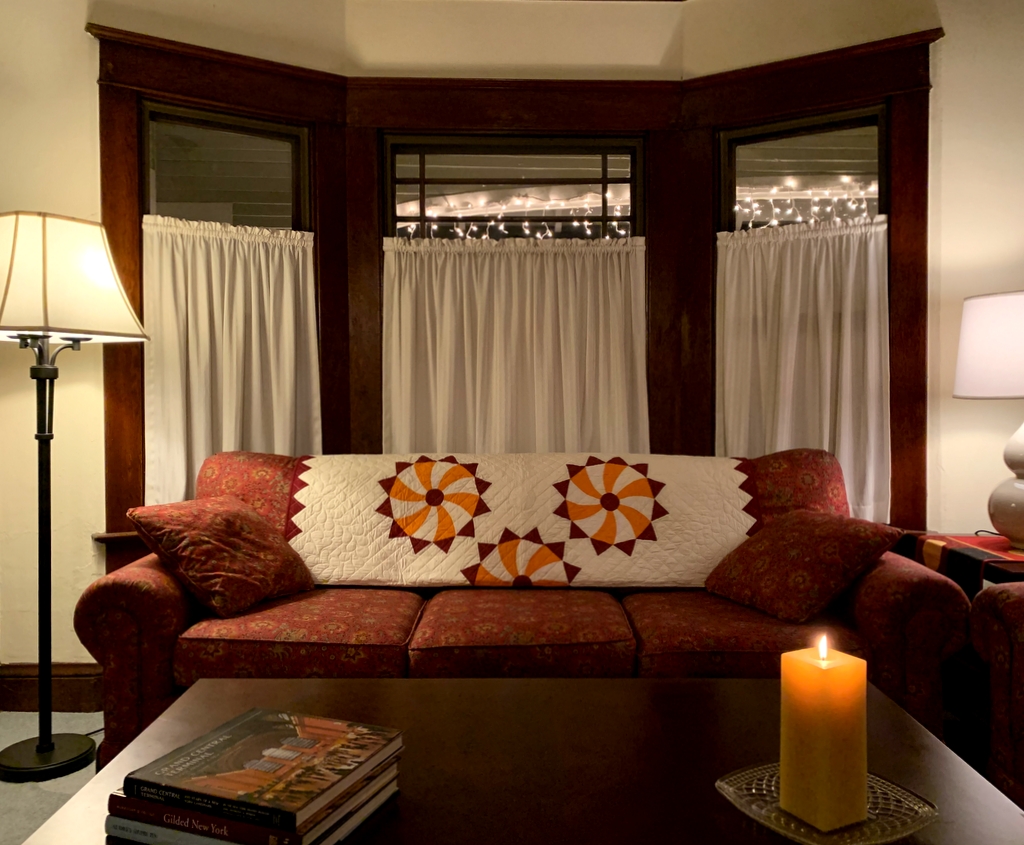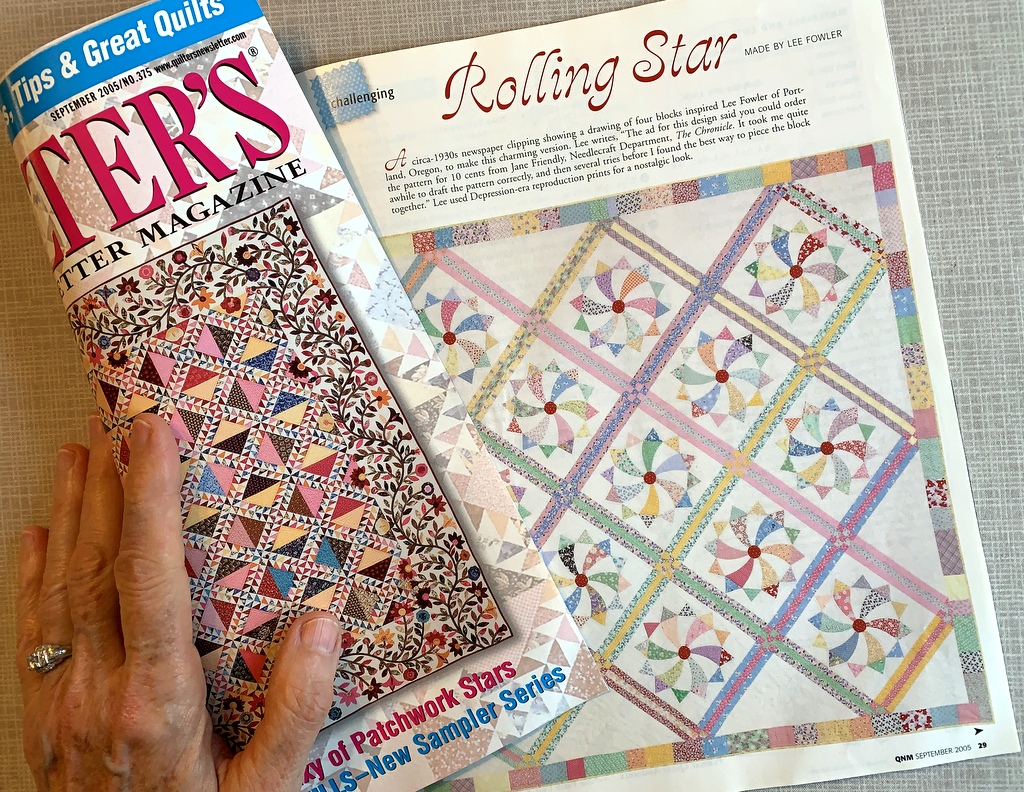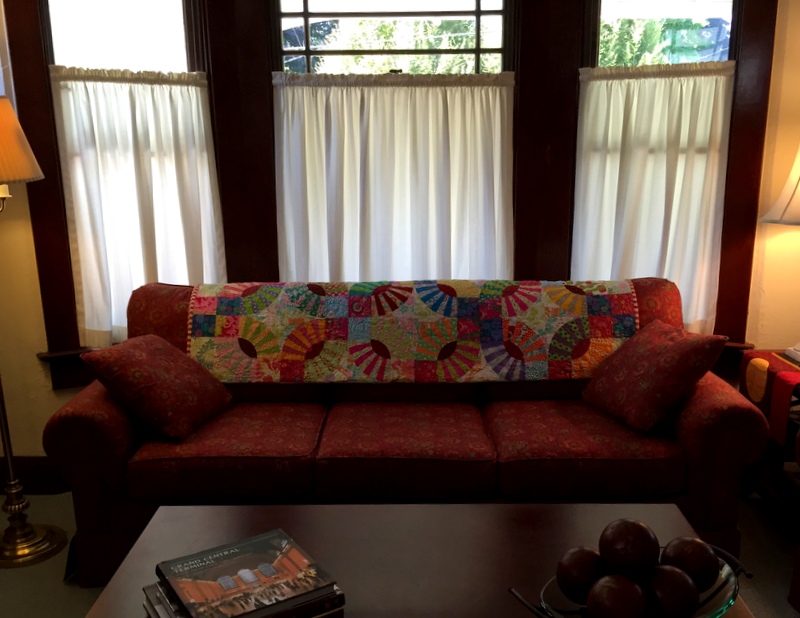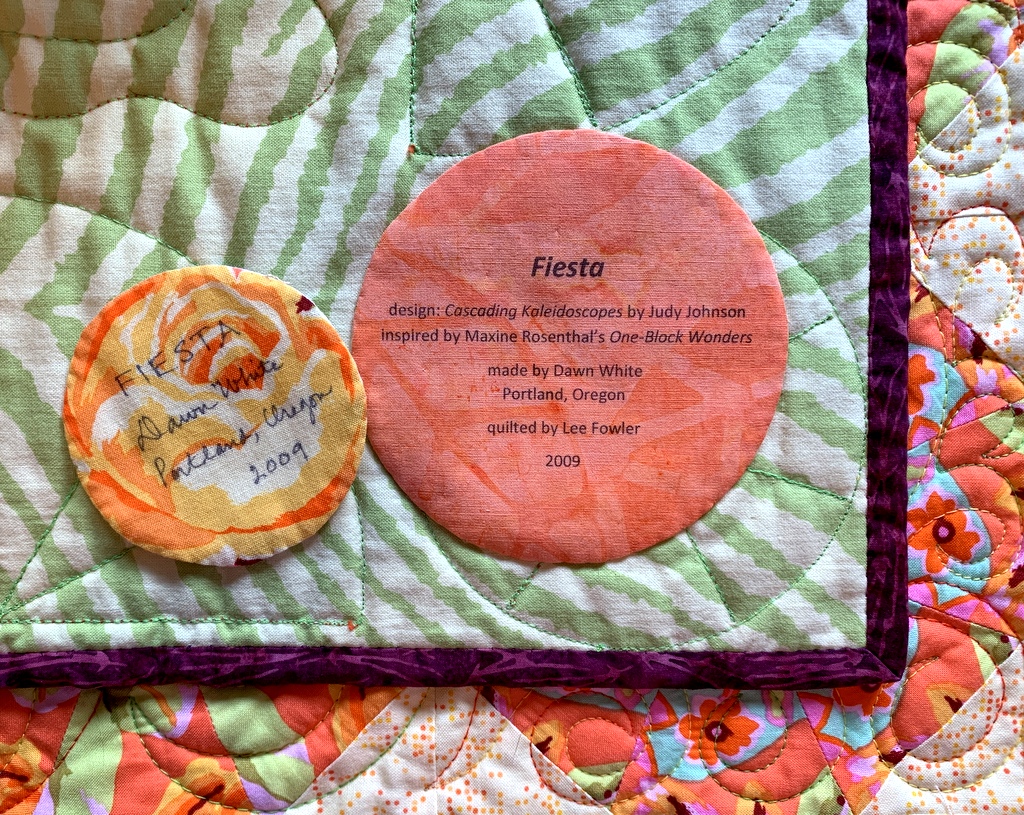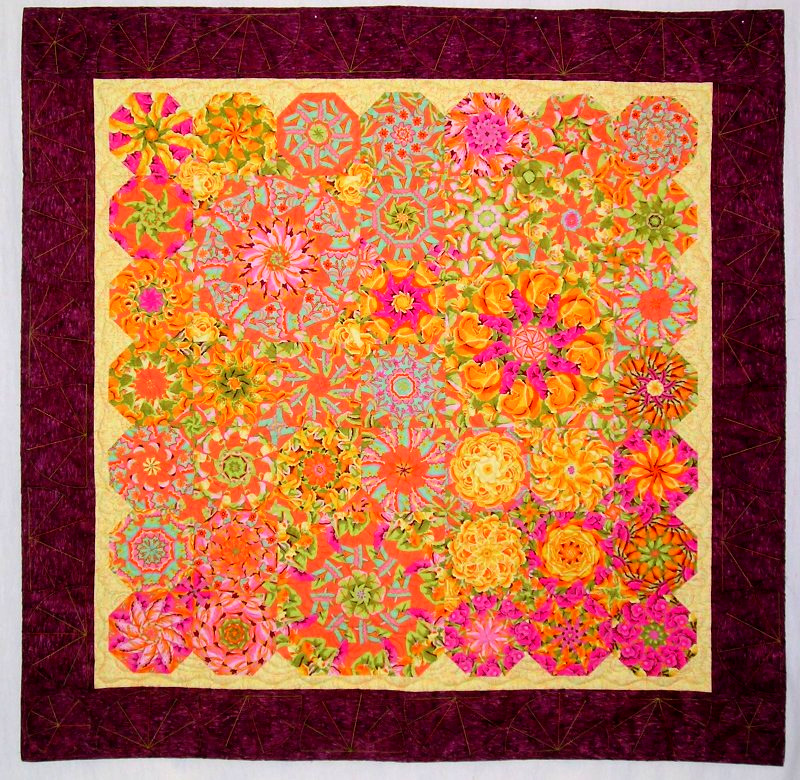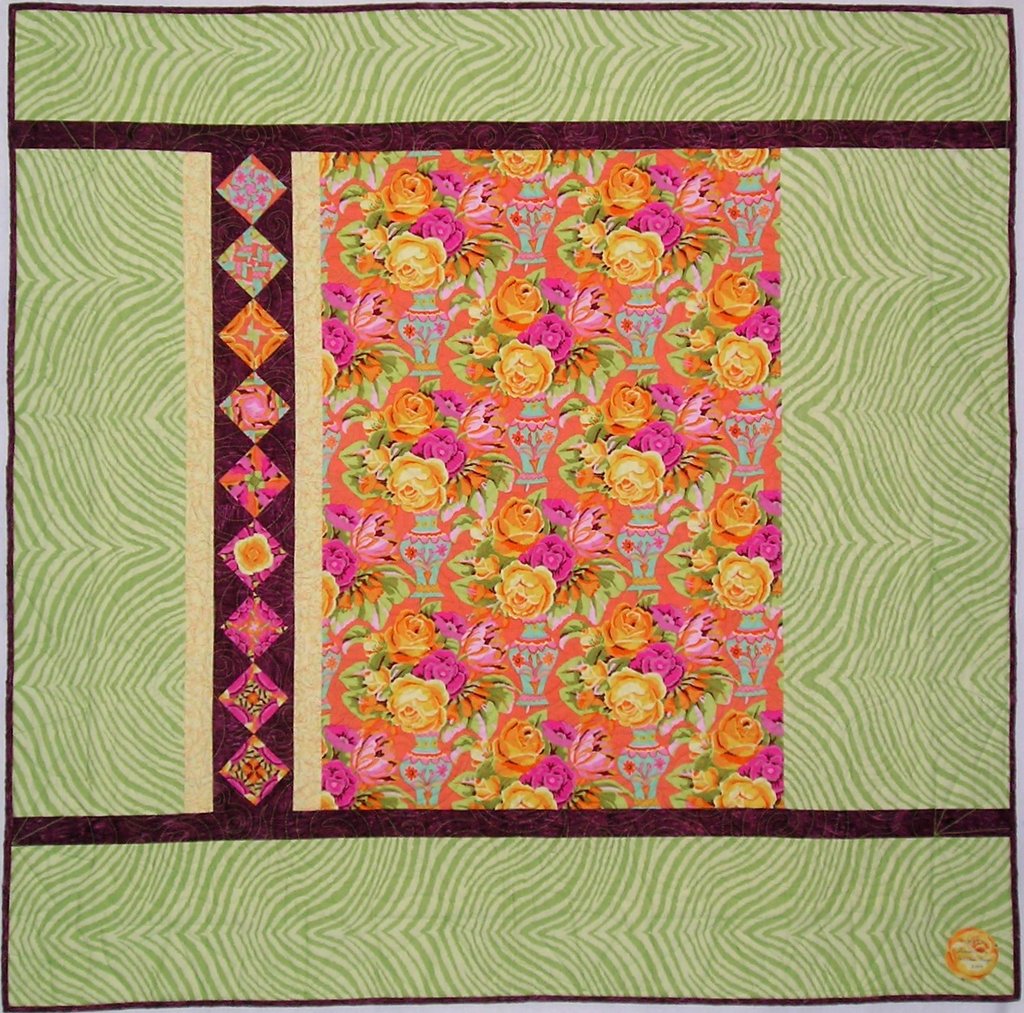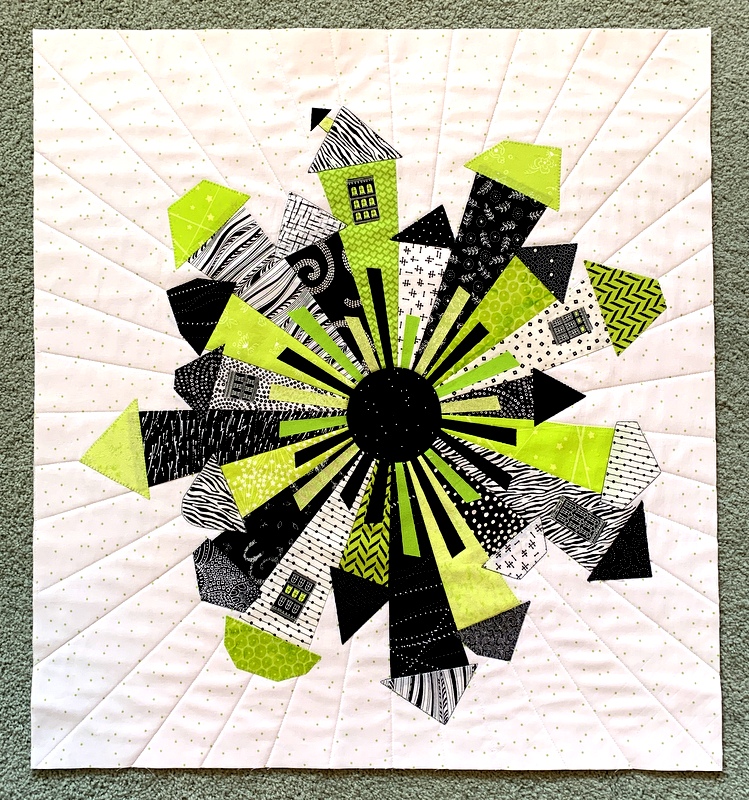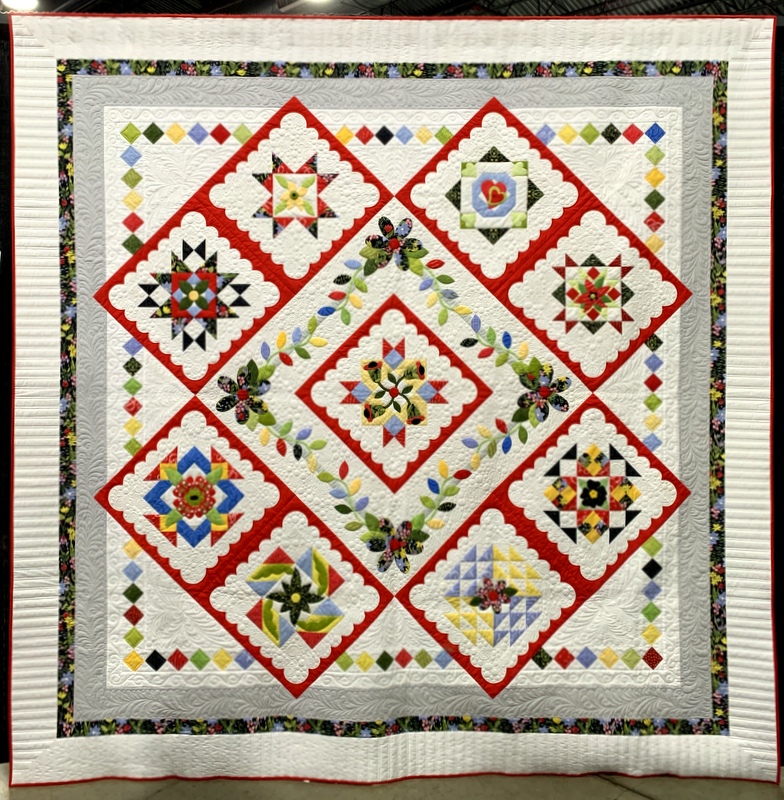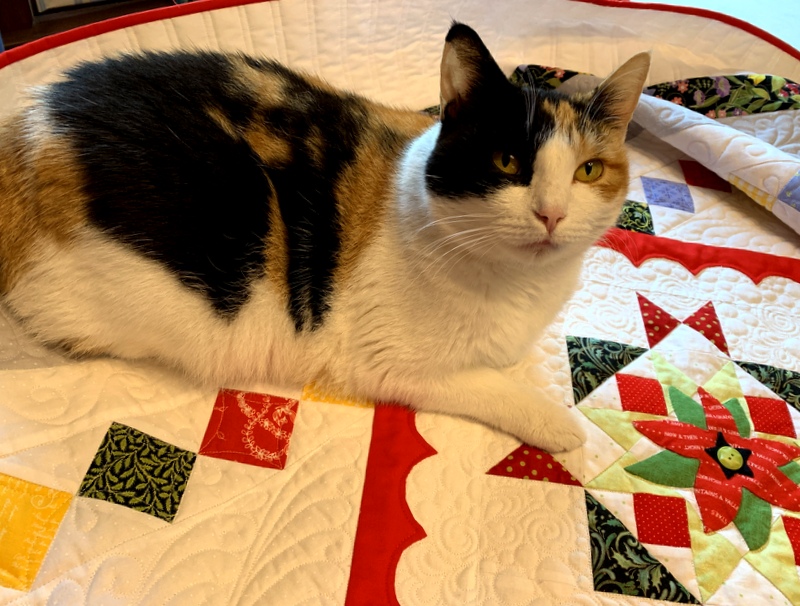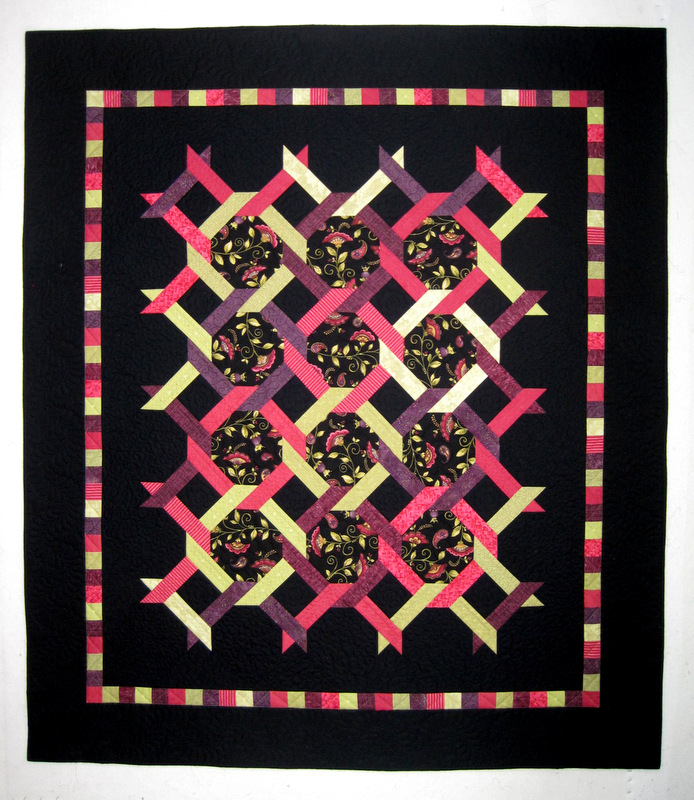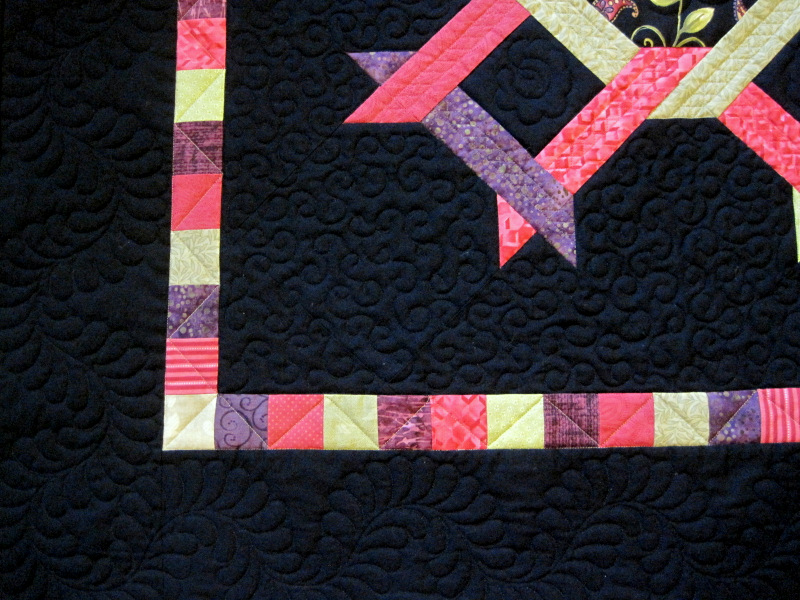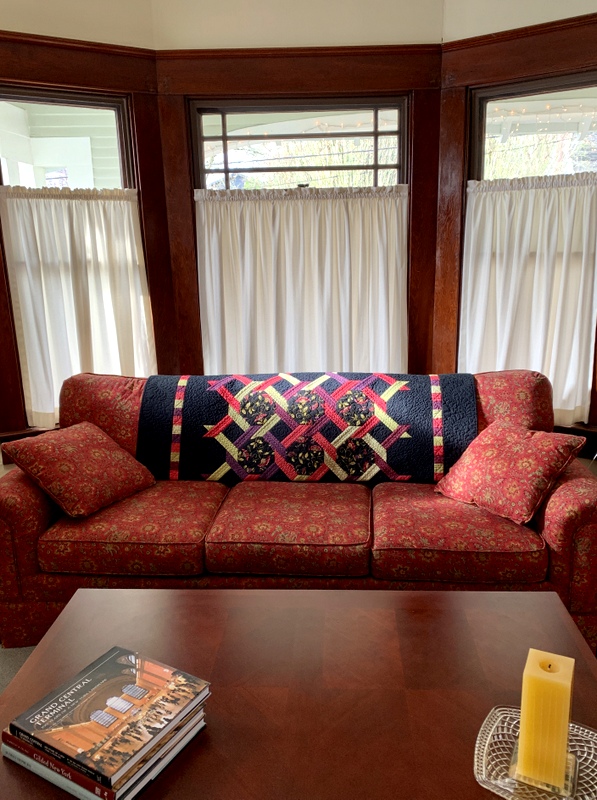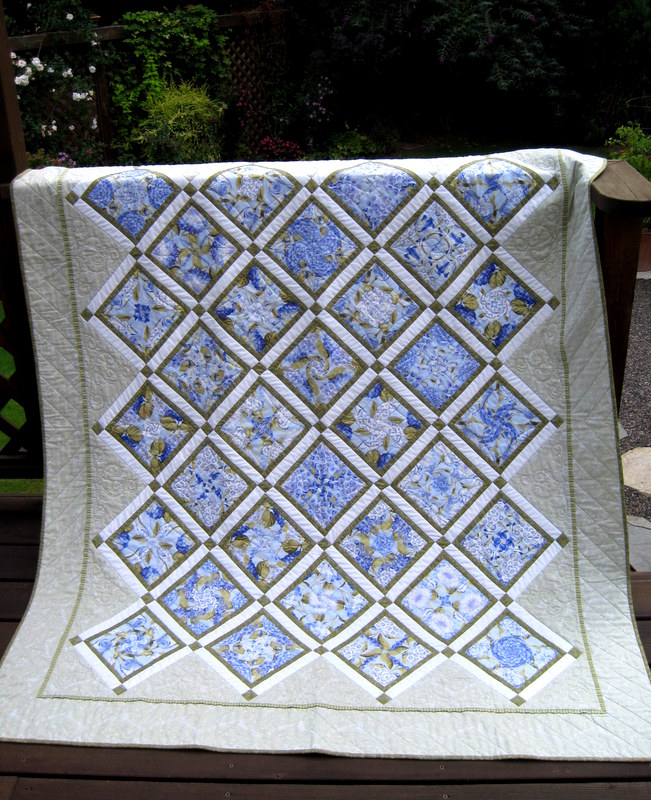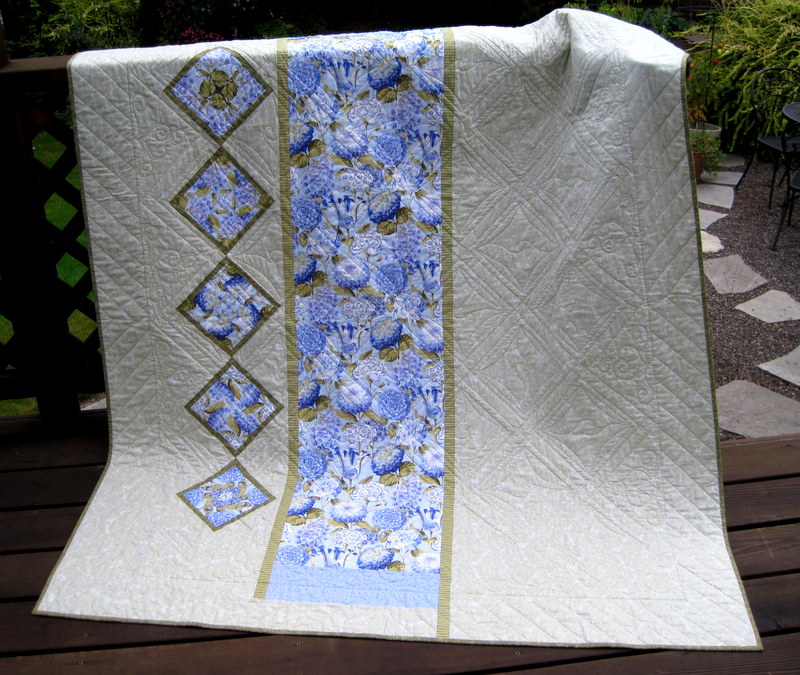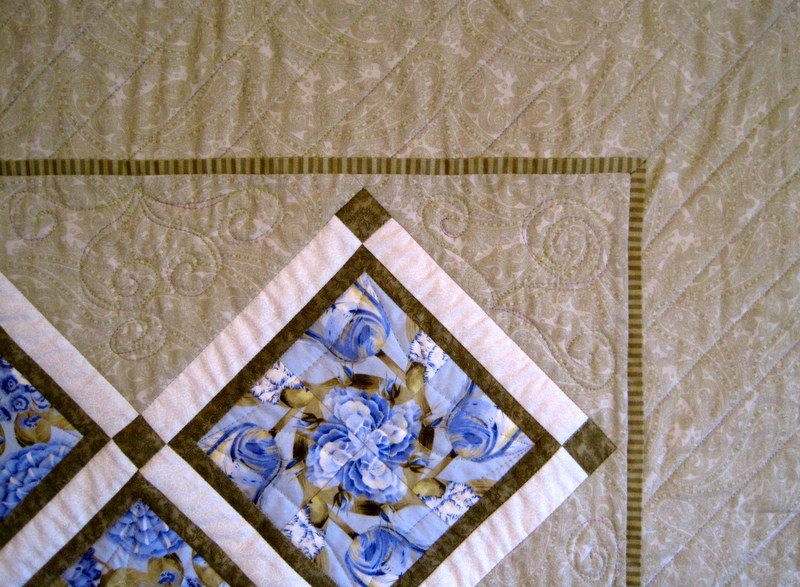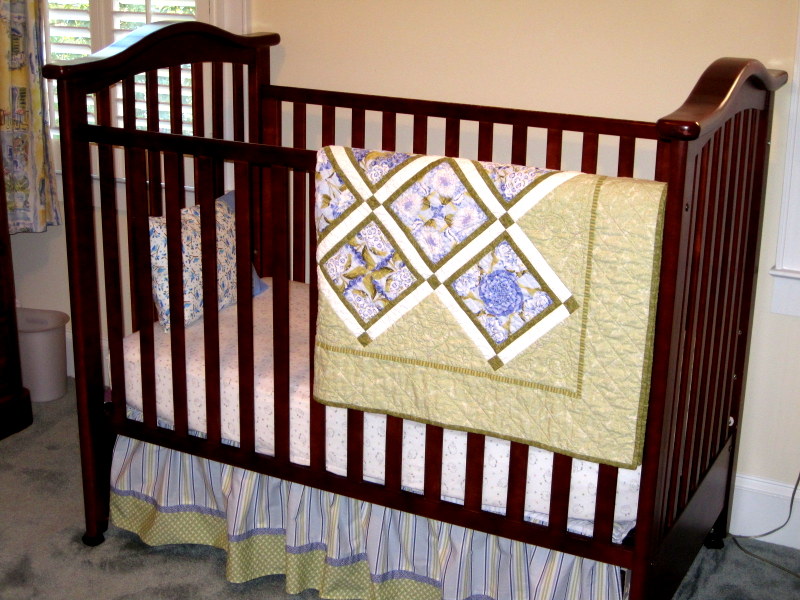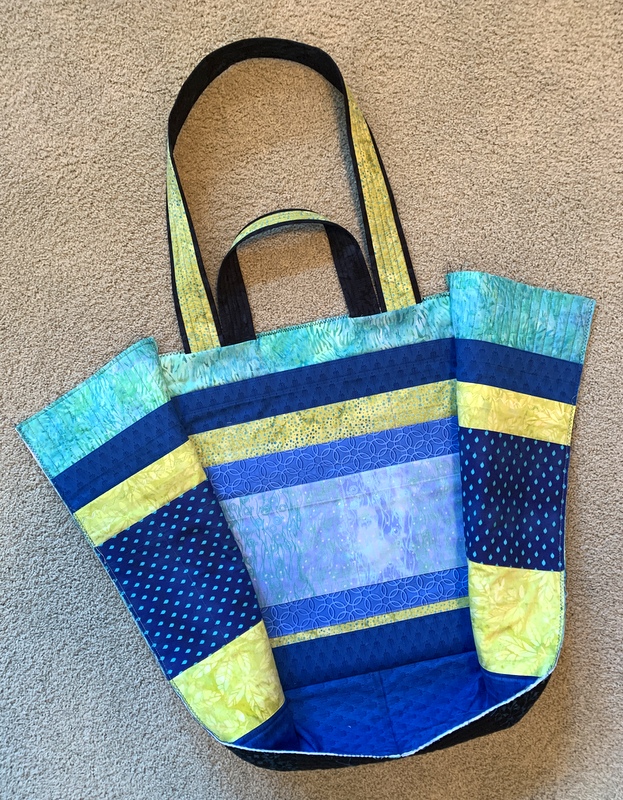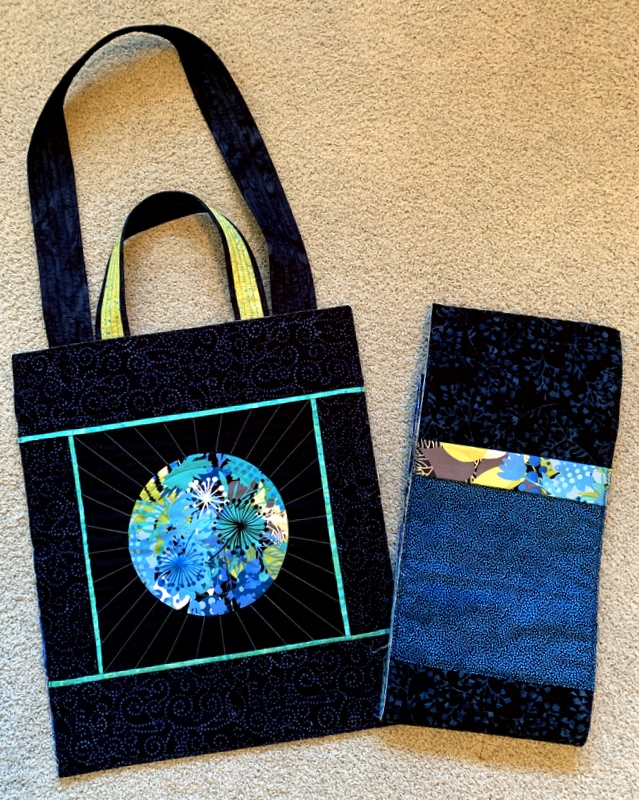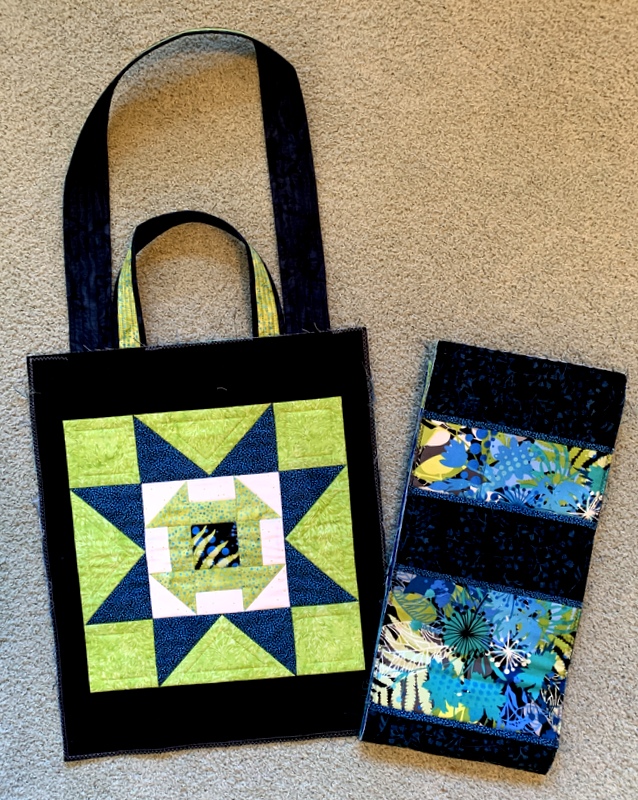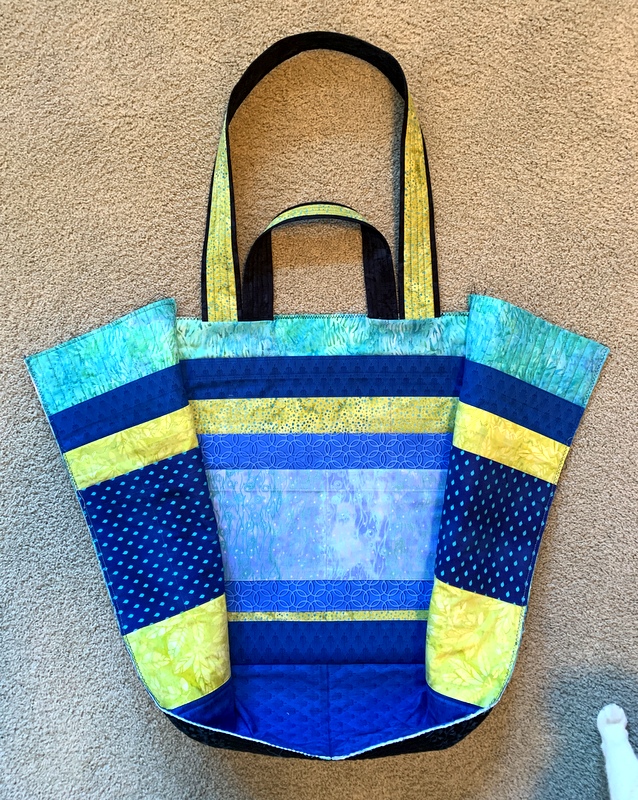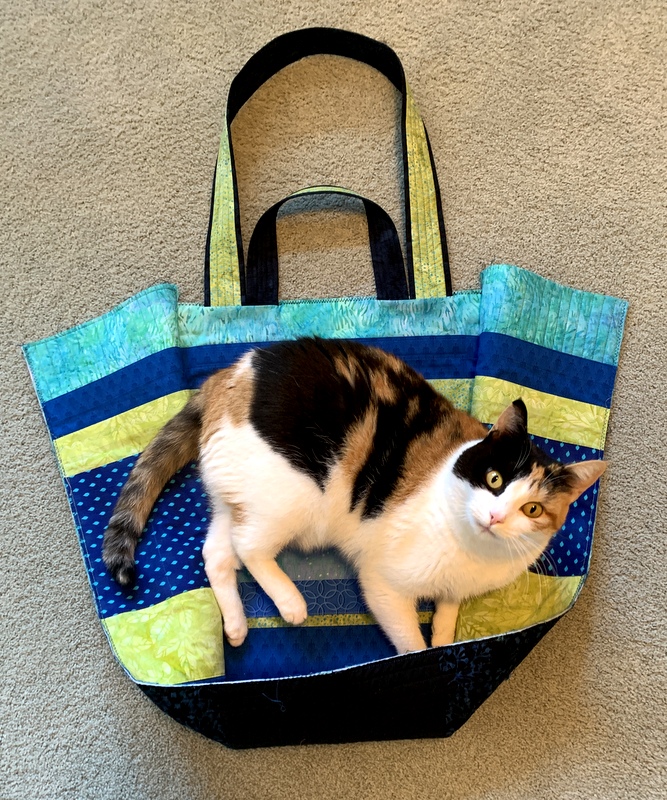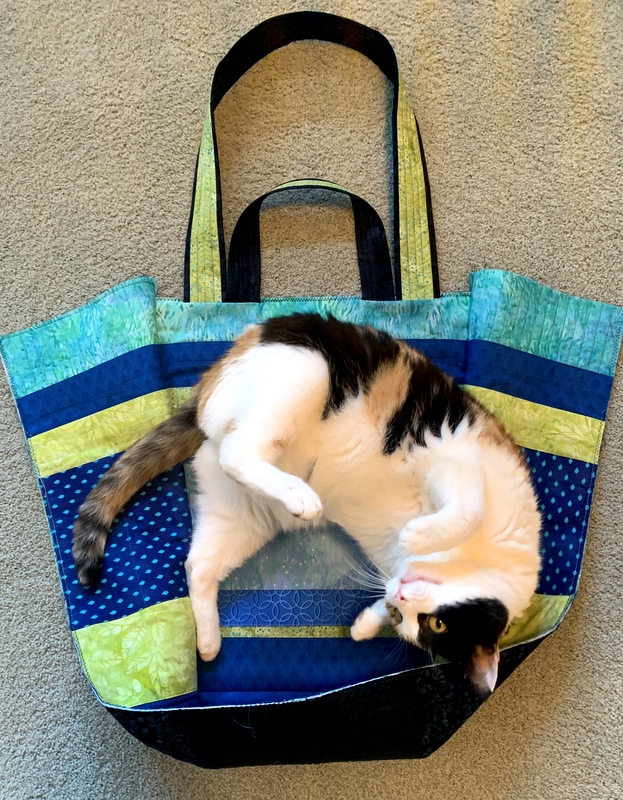Throwback Thursday: Early Quilts
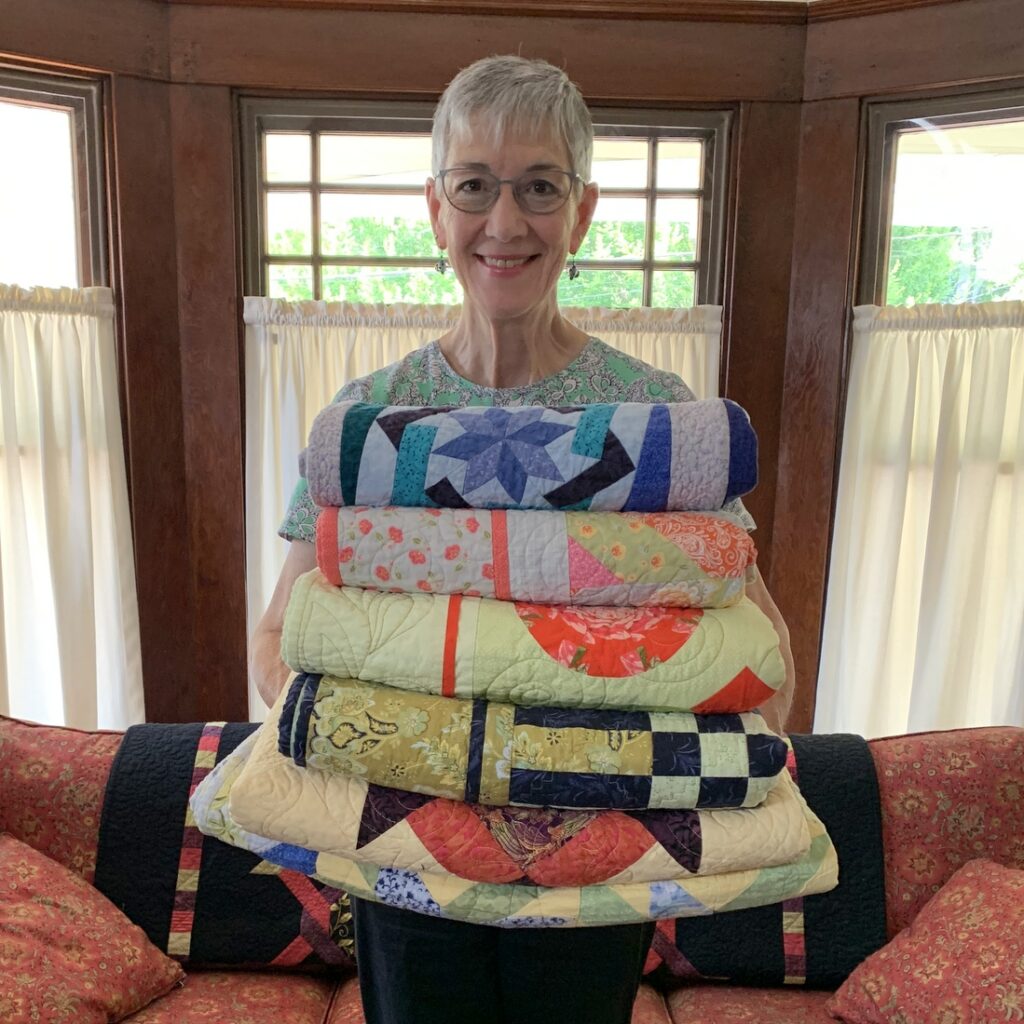 When I showed a picture on my blog a couple weeks ago of a stack of six quilts I had donated to Hopewell House, a hospice care facility in Southwest Portland, some of my readers asked to see pictures of the full quilts. Three of the quilts pictured above were made before starting my website/blog in 2012 so I thought it would be fun to do a “Throwback Thursday” post and show you these early quilts as well as the more recent ones.
When I showed a picture on my blog a couple weeks ago of a stack of six quilts I had donated to Hopewell House, a hospice care facility in Southwest Portland, some of my readers asked to see pictures of the full quilts. Three of the quilts pictured above were made before starting my website/blog in 2012 so I thought it would be fun to do a “Throwback Thursday” post and show you these early quilts as well as the more recent ones.
We start with the the quilt at the top of the stack — Swinging on a Star, the quilt I pieced in 2005 under Billie Mahorney’s tutelage in Quiltmaking III, the third installment of the Quiltmaking class she taught for so many years at the Pine Needle Quilt Shop in Lake Oswego (current home of the Lake Oswego branch of Montavilla Sewing Center):
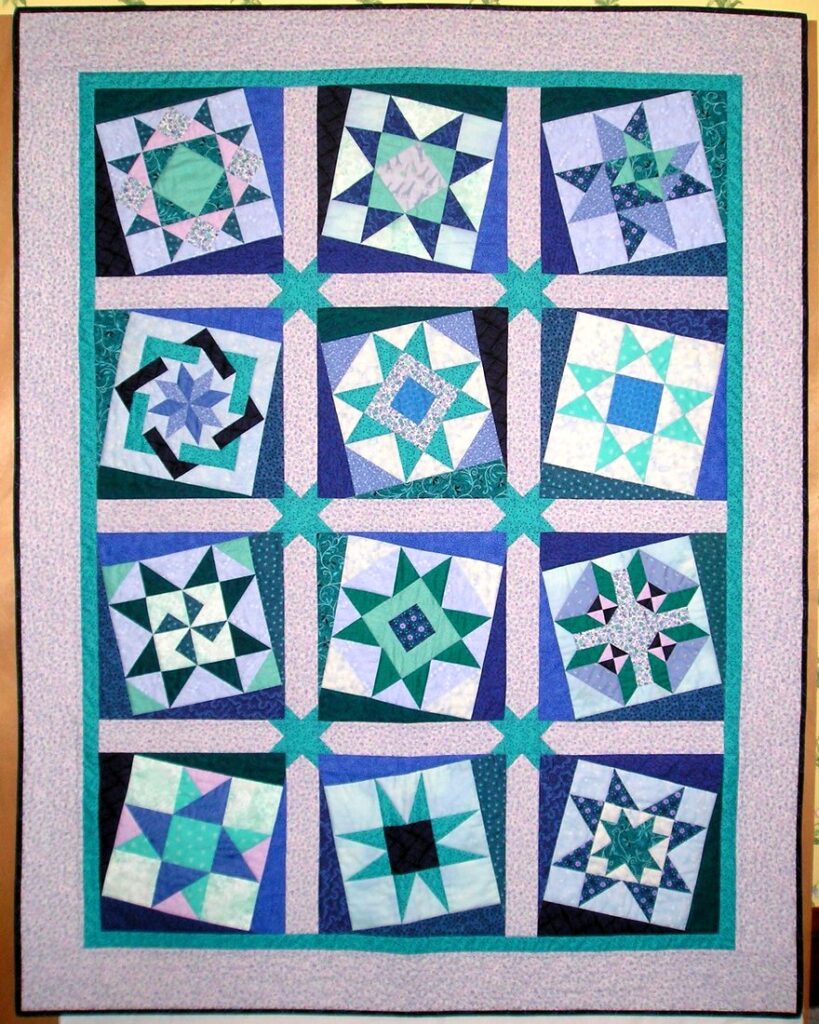
In this class Billie taught us how to draft blocks (including some from Quiltmaking II) that finish at 9″ square, and how to set them in a “Twist ‘n Turn” technique described by Sharyn Squier Craig in her 1996 book of the same name. At the time I started this quilt my focus was on using up cottons I had accumulated in the 1980s while making charity quilts for babies. Little did I know that setting foot in a quilt shop 20 years later would cause me to abandon all hope of using up that old fabric as I quickly began accumulating a much larger amount of new fabric that would become known as “my stash.”
Swinging on a Star was the first of my quilts that included free motion quilting (FMQ). Billie insisted that we learn how to do that. I stitched in the ditch around the star blocks and did free motion quilting in the borders. Happily the ditsy print in the borders hid a multitude of FMQ sins.
The fourth quilt I am holding in the first photo is Starry 9-Patch, finished in 2007. I took Billie’s Quiltmaking series out of order, starting with the second class. I learned so much in Quiltmaking II and III that I decided to take Quiltmaking I when she offered it again. The basic design was a combination of 9-Patch and Rail Fence blocks but I threw in some Sawtooth Stars to jazz it up a bit:
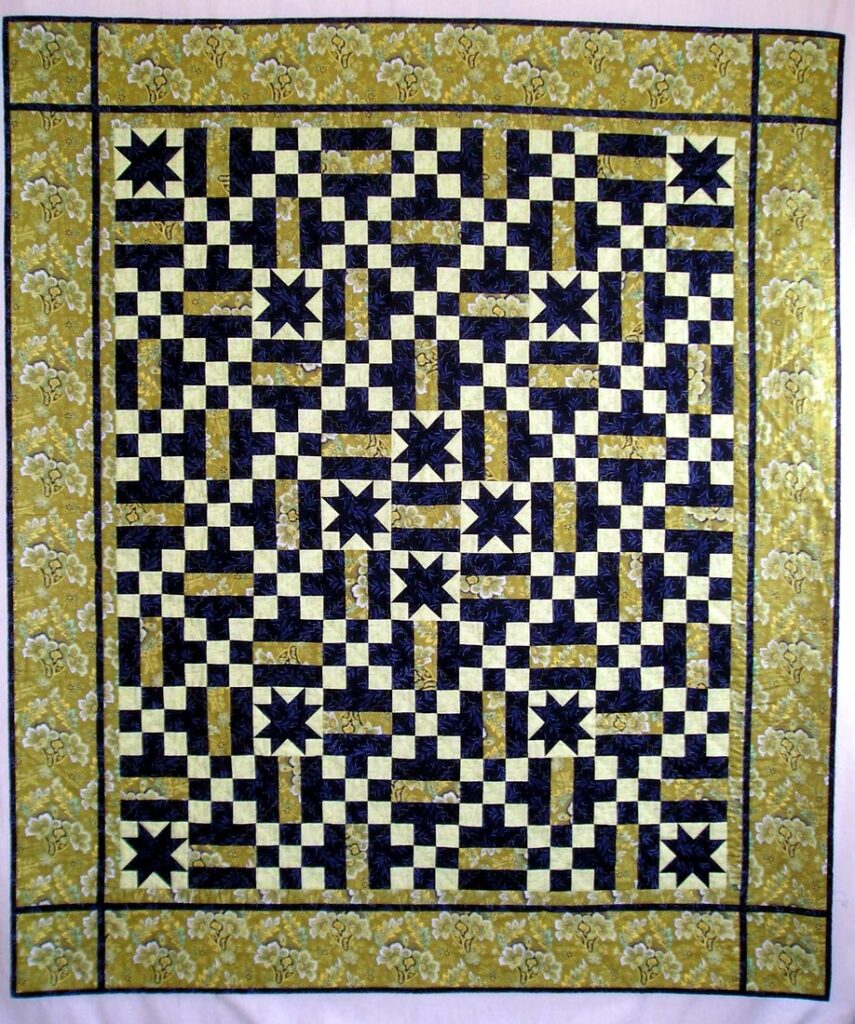
The bottom quilt in the stack pictured is based on Billie’s original design called Maisie’s Garden. She taught this class at the Pine Needle in 2007 and I happily jumped in, using a palette of blues, greens, and yellows, a combination I still love to this day:
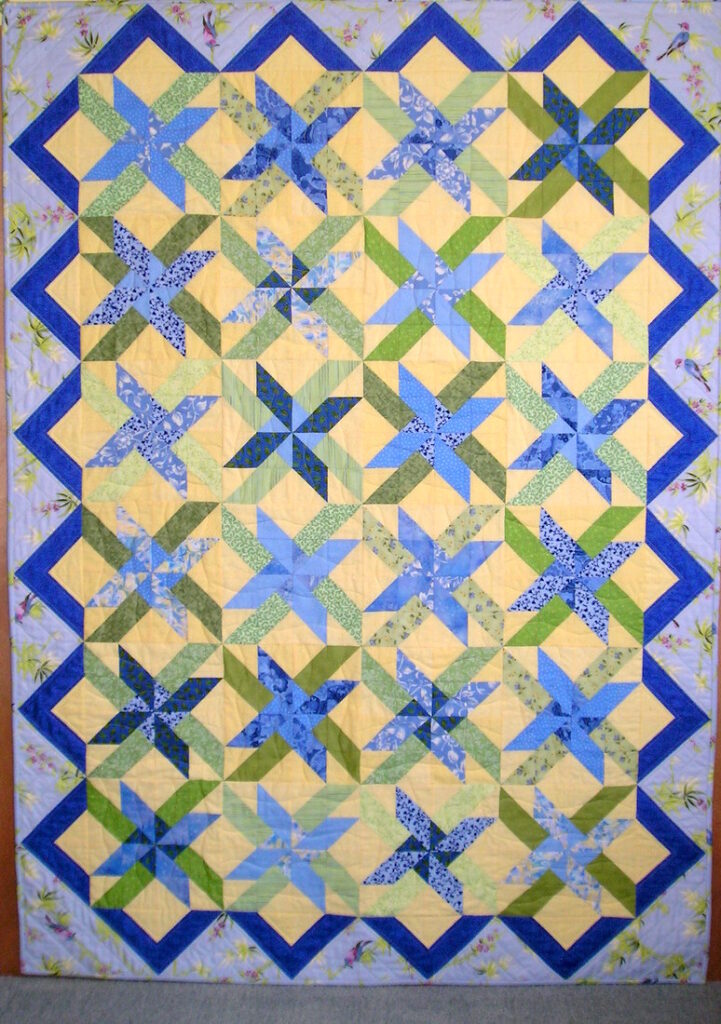
The next quilt in chronological order is V8, a quilt I designed to highlight my discovery of kaleidoscope blocks and inset circles:
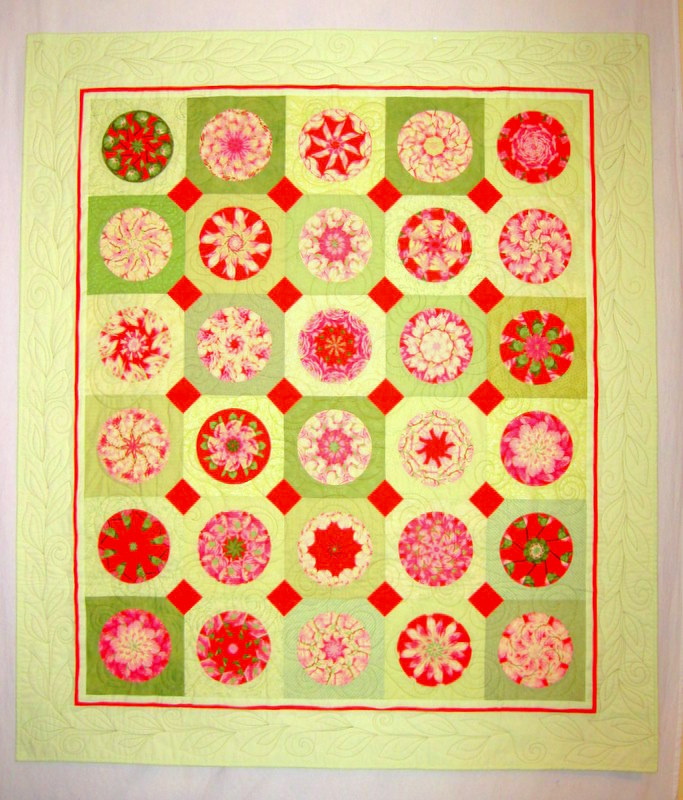
Every circle is a revelation! You don’t know what a block will look like until you have sewn eight 45-degree triangles together. I named my quilt V8 because the colors reminded me of the vegetables that go into the making of the vegetable juice blend.
One thing I can definitely say after posting these photos is that digital photography has certainly improved over the last 15 years!
Number 5 in the grouping of quilts is Simply Dashing, also an original design, this one focusing on four-patch kaleidoscope blocks, the ones I call “4-Patch Wonder” or “faux kaleidoscope” blocks:
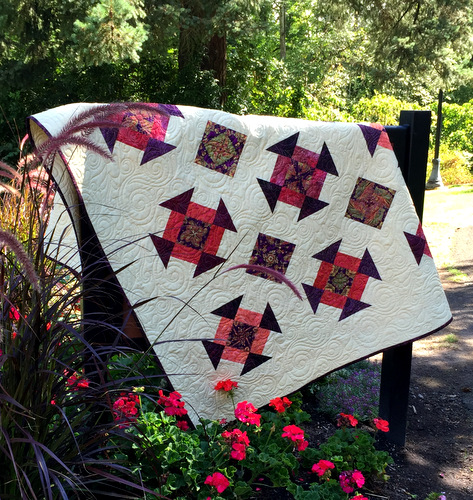
In this quilt the centers of the Churn Dash blocks (on point) and the alternating blocks (also on point) are 4-Patch Wonder blocks.
The final quilt I donated to Hopewell House is a recent one, Tea Time on High Street, finished in 2021:
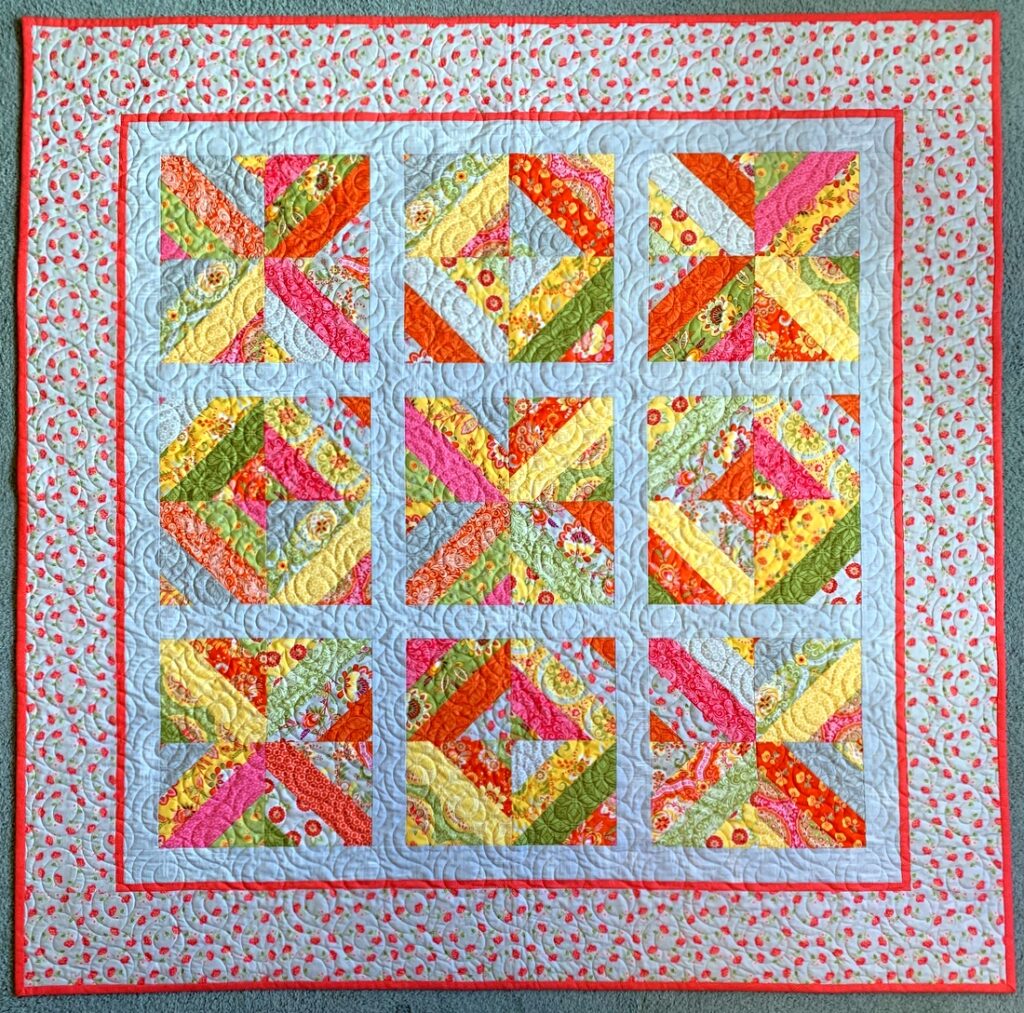
Was it hard to part with these quilts? To be honest, yes. The first three have a lot of sentimental value because of their association with my teacher and mentor Billie Mahorney. The other three represent steps I took in trying out my own designs and/or moving outside my comfort zone. The hospice patients and their families who become the recipients of these quilts may never know their significance in my quilting journey but the fact that they are helping people on a different kind of journey makes it all worthwhile.

